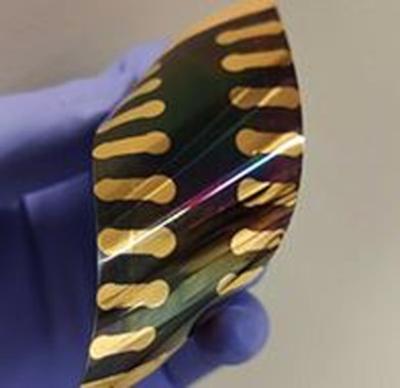Researchers at the University of Victoria in Canada and Solaires Enterprises have designed a flexible perovskite solar cell with an active area of 0.049 cm2 based on a polyethylene terephthalate (PET) substrate and a reactant known as phenyltrimethylammonium chloride (PTACl) in ambient air fabrication. Tested under standard illumination conditions, the flexible perovskite device achieved a power conversion efficiency of 17.6%, an open-circuit voltage of 0.95 V, a short-circuit current density of 23 mA cm−2, and a fill factor of 80%.
The team explained that PET is cheaper than commonly utilized polyethylene naphthalate (PEN) in substrates for flexible solar cells, with the latter having however the advantage of being more thermally stable during the production process. PET, by contrast, has a maximum temperature tolerance of 100 C and can tolerate deposition procedures under this threshold. For this reason, the research group chose a cell architecture with a substrate made of PET and indium tin oxide (ITO), an electron transport layer (ETL) based on tin oxide (SnO2), a methylammonium lead iodide (MAPbI3) perovskite absorber, a Spiro-OMeTAD hole-transporting layer (HTL), and a gold (Au) metal contact.
They deposited the SnO2 layer by annealing at 100 C, the Spiro-OMeTAD at 50 C, and the perovskite absorber at 100 C by a slot-die coating of acetate/chloride salts. “The acetate component of this ink converts to gas during perovskite deposition process, creating local positive pressure and pushing dust away from deposition area,” the scientists explained. “Deposition of perovskite from this ink requires neither clean rooms nor inert atmosphere. The chloride component, in contrast, improves crystallization dynamics of the film.”
“When adding PTACl into the colloidal solution of SnO2, we observed doubling the size of agglomerates, which indicates that the phase-transfer agent indeed increased the particle-to-particle interaction in the colloidal solution,” the team stated.
The scientists also built a 1 cm2 device with the same configuration showing an efficiency of 12.7%, an open-circuit voltage of 0.97 V, a short-circuit current density of 21.7 mA cm−2, and a fill factor of 60.2%. They said the fill factor loss compared to the smaller device is due to increased resistance of the ITO substrate, which they ensure can be further improved through improved electrode design.
“The incorporation of phase-transfer catalyst, PTACl, into the SnO2 colloidal solution improved particle-to-particle interaction, enhancing SnO2 coverage and strengthening the binding to the perovskite layer,” they explained, adding that future research should focus on replacing MAPbI3 with more stable perovskite materials.




